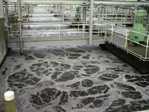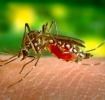
Howard F. Curren Advanced Wastewater Treatment Plant improved its efficiency by upgrading to online process monitoring and control.
Details on how to register for the Aug. 25 webcast are available on the American Water Works Association website.
The organizations want to know where and when Halliburton, B.J. Services and Schlumberger may have injected diesel during hydraulic fracking activities.
The AbTech Industries technology helps lower coliform bacteria levels in stormwater runoff.
"Science for Environment Policy" is offered free from the European Commission DG's Environment.
To resolve Clean Water Act issues related to 10 crude oil spills in four states, Houston-based Plains Pipeline will pay a $3.25 million penalty and install controls or new pipe to prevent future spills.
The agreement has set a 1-million home goal for increasing curbside recycling levels.

Ohio State University researcher William Mitsch says the 15-year experiment shows that the natural wetland seems stronger and the manmade wetland more diverse but both hold potential for carbon sequestration.

“Controlling the mosquito vector can work, but it is very expensive and difficult to sustain,” says Anna Durbin, M.D., who is leading the study at Johns Hopkins. “In the long run, vaccination would be a more efficient and cost-effective approach.”
The New Jersey Department of Environmental Protection and other stakeholders will
determine if the formula needs updating to account for disturbances to habitat, conservation, or resource protection, for example.
This meeting in Washington, D.C., of the National Commission on the BP Deepwater Horizon Oil Spill and Offshore Drilling will look at root causes of the Deepwater Horizon disaster and be broadcast live.
Fifty-eight investors with assets totaling $2.5 trillion are asking oil and gas companies and insurance companies to disclose their risk management plans by Nov. 1.

If you assess your risk from an underwriter's point of view, you should be able to secure some of the best possible terms and conditions for your environmental insurance.
- By Jayne Cunningham, James Wilkins
Iowa's environmental agency has identified 183 waterbodies that need water quality improvements.
American Public Works Association and Solid Waste Association of North America cooperate by holding conferences in same city.
According to the Department of Justice, the amount of the civil penalty is “precedent-setting” yet “appropriate in light of the unacceptable risk” created by the underground storage tanks at the defendants’ 17 gas stations in Maryland and Delaware.
Developed by EPA and DOE scientists, the free software enhances detection of hazardous contaminants in drinking water systems.
In the first enforcement case concluded against the mining and mineral processing industry, EPA is requiring the company to implement comprehensive waste containment and spill prevention measures, reconfigure scrubbers and construct a treatment system for hazardous wastes generated in fertilizer operations.

The Massachusetts Bay Transportation Authority and the Massachusetts Bay Commuter Railroad Company will have to install anti-idling equipment at all of its end-of-line stations and maintenance facilities.
More than 50 public meetings are scheduled for this CDC-ASTDR project about chemical exposures and public health. An action agenda is scheduled for release in December.